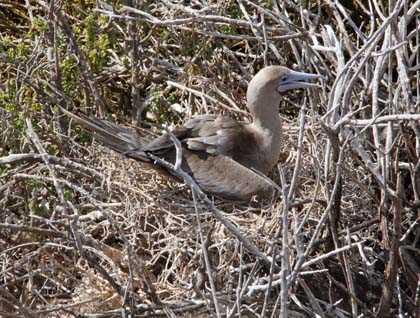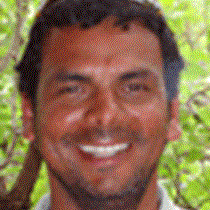The island of San Cristobal is one of five larger islands in the Galapagos archipelago, named after Christopher Columbus who discover America. It is one of the oldest islands in Galapagos, up to five million years old, and today it looks very different from the island that was originally formed.
At the most northern tip of the island, there is a visitor site called Punta Pitt, which is the destination of our explorers today. The National Geographic Endeavour drops anchor early in the morning, and after breakfast we are all ready to board the Zodiacs, to disembark at the green beach of Punta Pitt. The scenery once you are on the beach is hard to describe, and at first it is difficult to even see our path through the vegetation. The path takes us higher and higher, and once we reach its peak, the view that is waiting for us makes all of our efforts worthwhile. This steep walk through the canyon, turns into an easy, flat walk, taking us to a colony of pretty red-footed boobies. And all along the path, we find time to talk about the history of the island. San Cristobal was the second island to be colonized by Ecuadorians, and the first colonizer was a business man, who came from the Andean zone of the Republic of Ecuador. He began by hunting tortoises to extract their oil, which would earn him enough money to start a better, more promising business in the future. This was Manuel J. Cobos, who came to own Hacienda El Progreso in the island of San Cristobal, an important sugar cane plantation founded in Galapagos at the end of the nineteenth century.
We end our excursion with a refreshing swim from the beach.
In the afternoon, we begin our snorkeling excursion at Leon Dormido, where the shark sightings are fantastic, and we are surprised to hear that a Bryde’s whale has navigated close to this great snorkeling site. Our day’s exploration culminates with a great circumnavigation with Leon Dormido, lit up spectacularly by a beautiful sunset.







